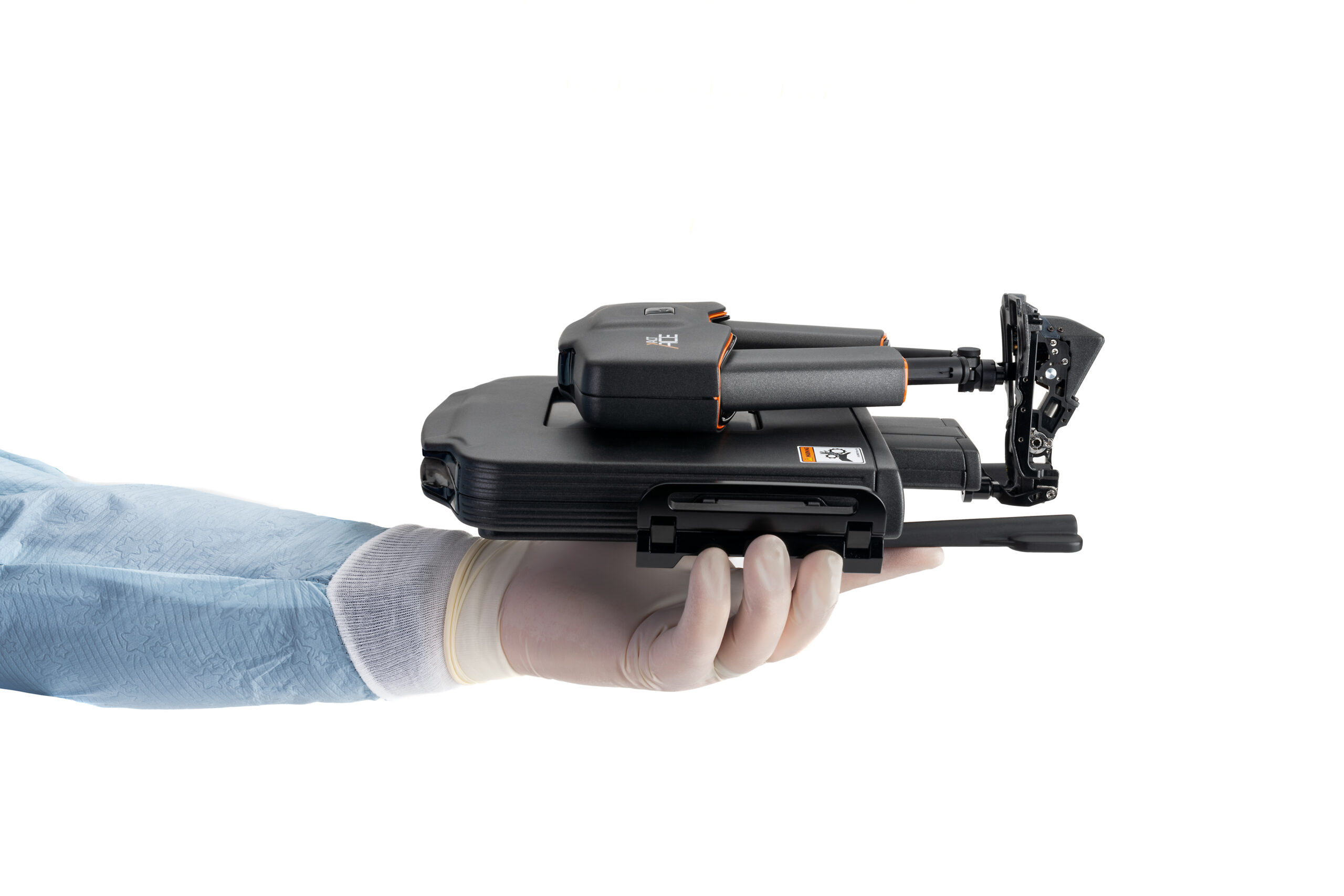 Less than accurate radiology percutaneous procedures — including biopsies and ablations — can negatively affect patient outcomes. Between having to potentially repositioning the patient and requiring several instrument insertions to reach a target, such radiology procedures can lead to increased procedure times, or worse — hospital readmission, which add to costs and is bad for patients. Further, if the target is too difficult to reach manually, sometimes patients have to watch and wait until the small target is reachable and that can cause anxiety. [Percutaneous refers to puncturing the skin, as opposed to more invasive, open surgery.]
Less than accurate radiology percutaneous procedures — including biopsies and ablations — can negatively affect patient outcomes. Between having to potentially repositioning the patient and requiring several instrument insertions to reach a target, such radiology procedures can lead to increased procedure times, or worse — hospital readmission, which add to costs and is bad for patients. Further, if the target is too difficult to reach manually, sometimes patients have to watch and wait until the small target is reachable and that can cause anxiety. [Percutaneous refers to puncturing the skin, as opposed to more invasive, open surgery.]
One company — XACT Robotics — is attempting to solve this problem in radiology and with a bold claim: that it alone is a true surgical robotics company in the interventional radiology arena as it relates to percutaneous procedures. It claims that it can prevent readmissions that is expensive for hospitals at a time when hospital revenue is strained.
The Israeli firm combines real-time monitoring and guided image planning with both precise robotic insertion and non-linear steering, explained its founder Harel Gadot in an email exchange.

With the Rise of AI, What IP Disputes in Healthcare Are Likely to Emerge?
Munck Wilson Mandala Partner Greg Howison shared his perspective on some of the legal ramifications around AI, IP, connected devices and the data they generate, in response to emailed questions.
“With its unique features, it was purpose-built to improve the accuracy, consistency, and efficiency of image guided percutaneous procedures and now helps healthcare professionals accurately target small, hard-to-reach areas in a consistent and efficient way,” Gadot said in an email provided by a representative.
The size of XACT ACE Robotic System is roughly that of an iPad, not the typical footprint of other radiology systems that require a dedicated room. Since it does not need a dedicated space, it can be used in multiple settings, from the OR to CT/MRI suites to clinics or other departments. Further, the product comes with an optional remote-control component so one can operate the system from a different room, protecting the user from radiation, Gadot explained.
The potential benefits of such an interventional radiology robotic surgery option appear to go beyond the initial goal of reaching a difficult target.
“Traditional manual insertion for percutaneous procedures generates excess spending, spurs HCP strain, and subjects patients to prolonged radiation exposure,” Gadot said. “Hospital systems today are searching for process efficiencies, especially amid staff shortages, so procedure duration matters more than ever.”
XACT ACE Robotic System won FDA clearance in 2019. Gadot claims XACT is the only truly robotic surgery system in the marketplace for the type of radiological and oncological interventions his system is addressing.
“Although other solutions claim to have a robotic component, all of them are purely navigation systems and although some have additional hardware to hold the instrument at the entry level, none of them offer a solution to the multiple unmet needs in this space,” Gadot clarified. “There are no competitors that have the robotic insertion and non-linear steering capabilities needed to overcome the obstacles in these procedures.”
Current radiology robotics products on the market can have less than optimal results due to issues like soft tissue moving during the procedure and flexible instruments, according to Gadot. Add in that many patients are awake during the procedure and the issues increase, he added.
“XACT’s true competition is the status quo: procedures that are carried out manually,” Gadot declared.
One reason to adopt his system, is because the success of manual surgeries is heavily dependent on the skill of the surgeon and even the most skilled can struggle to reach difficult targets.
XACT started with radiology applications, but has expanded to other areas, including thoracic and orthopedic surgery, according to Gadot.
“[These areas] face the same challenges trying to access percutaneous procedures. Therefore, it’s critical that professionals in every department, even outside of radiology and oncology, are aware of the solutions that enhance patient care and increase efficiencies,” he said.
Photo: XACT Robotics
Edit: Due to incorrect information provided, a previous version said FDA clearance was granted in 2020. The first robot initially gained FDA clearance in 2019, not 2020. Subsequent iterations received clearance in the years after.














